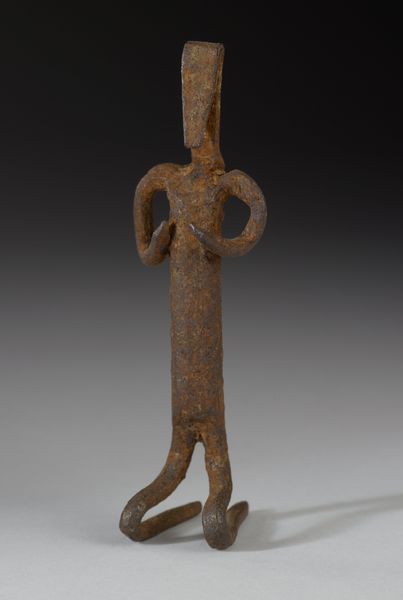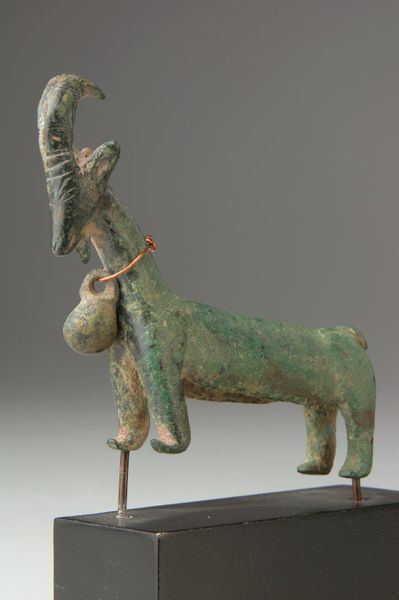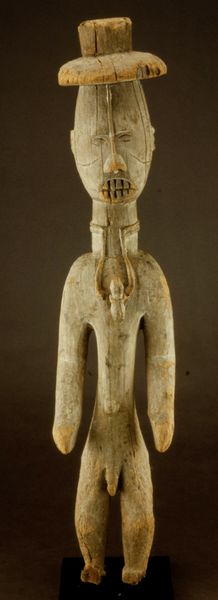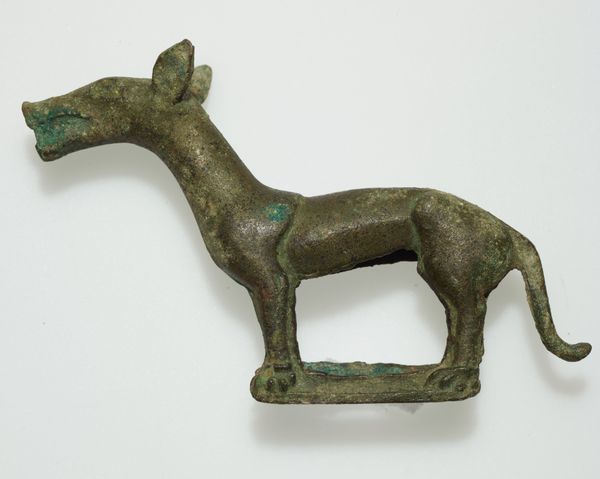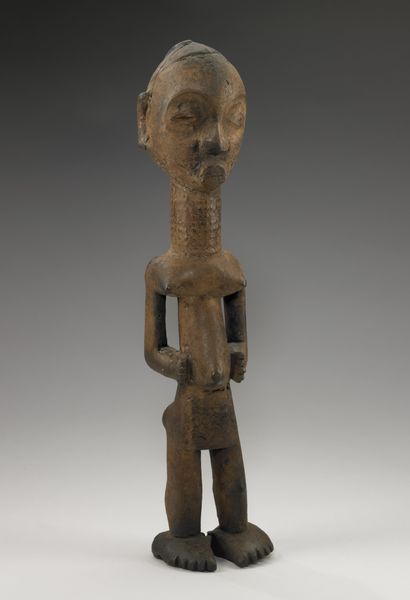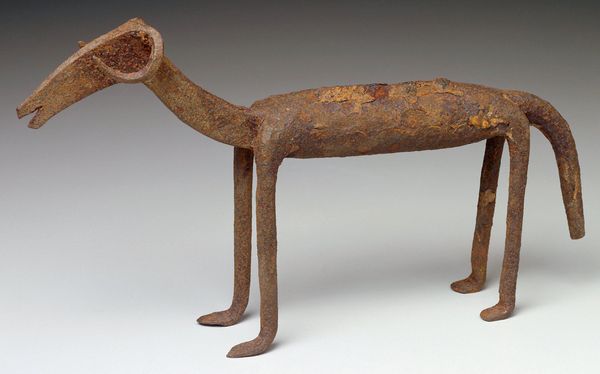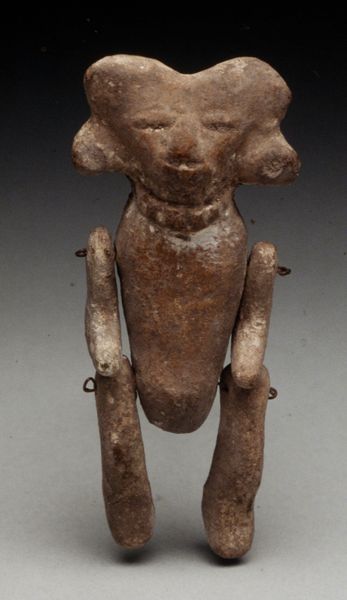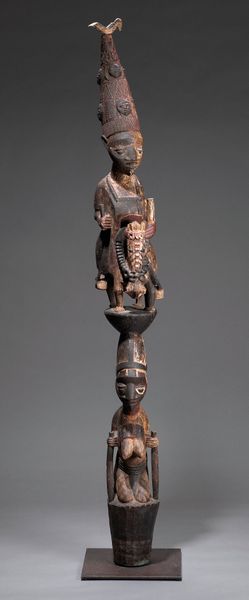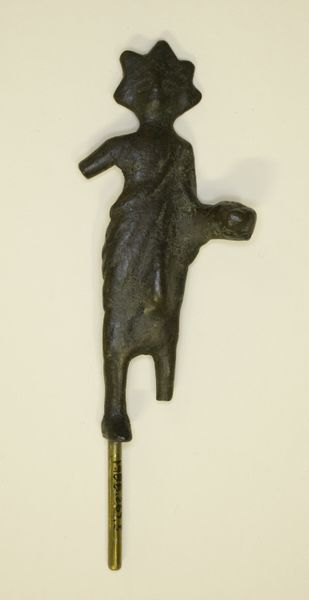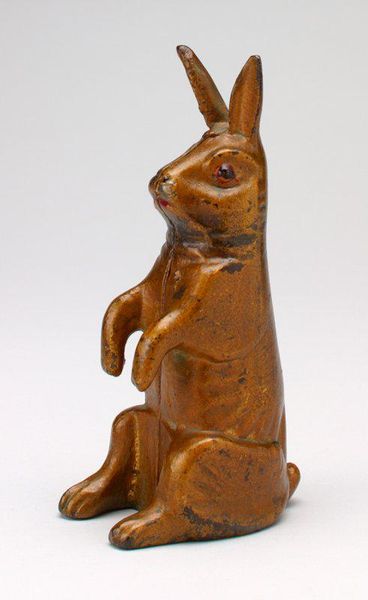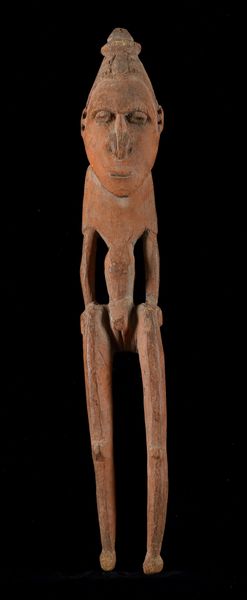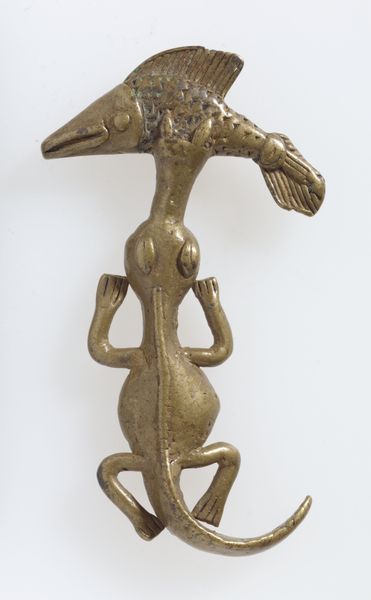
carving, sculpture, wood
#
african-art
#
carving
#
narrative-art
#
sculptural image
#
figuration
#
sculpture
#
horse
#
wood
Dimensions: 35.2 × 6.4 × 12.1 cm (13 7/8 × 2 1/2 × 4 3/4 in.)
Copyright: Public Domain
Curator: Immediately, there's something incredibly austere about this piece. A solitary figure, elongated and mounted. It reminds me of the visual vocabulary of Giacometti but rendered in what looks to be heavy, textured wood. Editor: Indeed. This is a Dogon equestrian figure. The work’s precise date is debated, placing it sometime between the 16th and 19th centuries. Dogon art is deeply rooted in their social structures and religious beliefs; the horse and rider motif, of which this wood carving is an example, can represent power, status, and even ancestral connections. Curator: The stark simplification is striking. The form is almost reduced to pure geometrical shapes. Note the cylindrical body of both horse and rider and how the minimal details— the horse's rudimentary legs, the rider’s elongated face with what looks like a beard— speak volumes. There is incredible tension between abstraction and figuration. Editor: It is intriguing how this artwork would have played a specific role within the society. Consider, for instance, that equestrian figures such as these are historically linked to the Hogon, the Dogon's spiritual leader. Such sculptures likely served as votive offerings meant to ensure prosperity and commemorate powerful leaders. Curator: The surface itself seems incredibly important here. The rough texture of the wood suggests age and possibly ritualistic handling. Look how light and shadow play across the deliberately crude carving marks, adding depth to the essentially planar forms. Editor: Precisely. The politics surrounding this kind of imagery also need consideration. These carvings weren't just aesthetic objects but played vital roles in reaffirming hierarchies and embodying Dogon values in the face of external forces, which helps reveal just how integral artworks can be to collective identity and self-representation. Curator: Examining "Equestrian Figure" is truly fascinating because of its compelling fusion of form and expression that gives insight into ways of representation and signification beyond conventional means. Editor: Indeed, understanding art history enables us to discern how art shapes and reflects communal experiences, reinforcing social memories in significant ways.
Comments
No comments
Be the first to comment and join the conversation on the ultimate creative platform.
